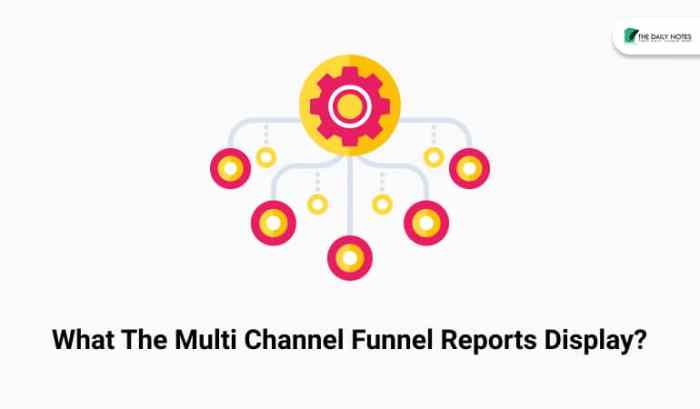In multi-channel funnel reports how are default conversions credited – In multi-channel funnel reports, default conversions are attributed to specific channels based on predefined rules or algorithms. This practice aims to provide insights into the effectiveness of different marketing touchpoints and optimize marketing campaigns accordingly. Understanding how default conversions are credited is crucial for accurate data interpretation and effective decision-making.
Default conversion crediting offers advantages such as improved accuracy and consistency in tracking conversions across multiple channels. It helps marketers gain a comprehensive view of the customer journey and identify the most influential touchpoints. However, challenges like potential bias and data limitations should be considered, and alternative approaches to conversion crediting may need to be explored.
Default Conversion Crediting in Multi-Channel Funnel Reports: In Multi-channel Funnel Reports How Are Default Conversions Credited

In multi-channel funnel reports, default conversion crediting refers to the process of attributing conversions to specific marketing channels in the absence of sufficient data to determine the exact channel responsible.
Default conversion crediting methods include:
- Last-click attribution:Credits the last channel interaction before the conversion.
- First-click attribution:Credits the first channel interaction in the conversion path.
- Linear attribution:Distributes conversion credit equally among all channels involved.
- Time-decay attribution:Assigns more credit to channels closer to the conversion in time.
Benefits of Using Default Conversion Crediting
Default conversion crediting offers several advantages:
- Improved accuracy:Reduces the risk of underestimating the contribution of certain channels.
- Consistency:Ensures a consistent approach to conversion crediting across different campaigns and platforms.
- Enhanced decision-making:Provides a clearer understanding of the effectiveness of different channels, enabling better marketing decisions.
Challenges of Default Conversion Crediting
Default conversion crediting also presents some challenges:
- Potential bias:Default methods may favor certain channels over others, potentially distorting the true contribution of each channel.
- Data limitations:Lack of granular data can make it difficult to accurately attribute conversions to specific channels.
Alternative approaches to conversion crediting include:
- Position-based attribution:Credits conversion to the channels that appear at specific positions (e.g., first, last, middle) in the conversion path.
- Data-driven attribution:Uses statistical models to determine the contribution of each channel based on historical data.
Best Practices for Default Conversion Crediting
To ensure optimal performance, follow these best practices:
- Collect comprehensive data:Gather data on all relevant channel interactions and conversions.
- Select an appropriate attribution model:Choose a model that aligns with the marketing goals and data availability.
- Monitor and evaluate performance:Regularly track conversion data and adjust the attribution model as needed.
Case Studies and Examples, In multi-channel funnel reports how are default conversions credited
Case studies demonstrate the application of default conversion crediting:
Example 1:A retail company used last-click attribution to identify the most effective channels for driving online sales. The analysis revealed that email marketing was the primary driver of conversions, leading to increased investment in email campaigns.
Example 2:A software company implemented time-decay attribution to better understand the long-term impact of content marketing. The results showed that content published several months prior to conversion still contributed significantly, leading to a shift in content strategy.
Expert Answers
What are the benefits of using default conversion crediting?
Default conversion crediting provides improved accuracy and consistency in tracking conversions, offering a comprehensive view of the customer journey and identifying influential touchpoints.
What are the challenges associated with default conversion crediting?
Potential bias and data limitations are challenges associated with default conversion crediting, necessitating the consideration of alternative approaches.
How can marketers optimize their default conversion crediting strategies?
Implementing best practices, monitoring performance, and considering alternative approaches when necessary helps marketers optimize their default conversion crediting strategies for improved marketing effectiveness.

